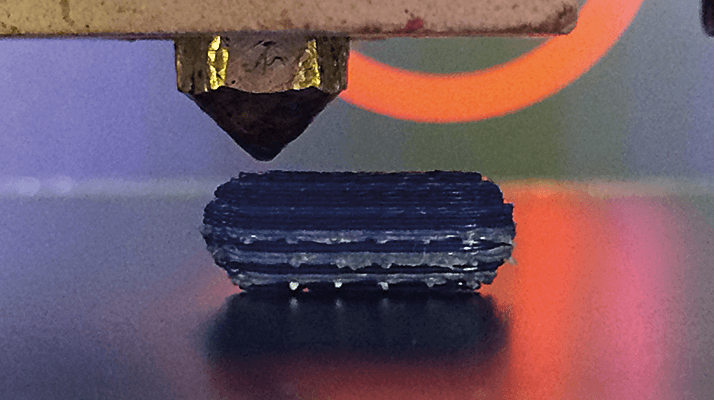Simon Gaisford, Reader in Pharmaceutics and Head of the Department of Pharmaceutics at University College London (UCL) has a keen interest in the concept of 3D printing solid dosage forms. Earlier this year, Gaisford and his team used 3D printing to give tablets a geometric makeover. The group created several shapes that are difficult to produce using traditional tablet manufacturing techniques, including a cube, pyramid, cylinder, sphere and torus (1) – they even experimented with animal-shaped tablets. But the project wasn’t about producing weird and wonderful geometries just for fun; different shaped tablets have different drug release profiles – and could be useful for personalized medicine. The pyramid dissolved the fastest, whereas the cylinder was the slowest – drug release was dependent not on the surface area, but on the surface area-to-volume ratio.

“With 3D printing, it is possible to print tablets of any size and shape – and the minimum production run is one,” says Gaisford. “This means we can (i) explore the effect of geometry on drug release rates in a way never possible before, (ii) construct multi-layered or multi-faceted tablets (such as ‘poly pills’), and (iii) truly consider the paradigm of personalized medicines where the dose or dose combination can be tailored to the patient.”
The group used FDM to fabricate tablets layer-by-layer. Gaisford believes that this type of printing is particularly suited to pharma manufacture because the polymer filaments can be blended with drug(s) using hot-melt extrusion. “Developing printable filaments of pharmaceutically acceptable polymers was one of the challenges,” says Gaisford. “3D printers were designed for rapid prototyping and so typically print hard engineering polymers that are not water soluble. Getting the polymer–drug blend extruded was also difficult. It would also be good to print faster (currently it takes 5–10 minutes to fabricate a tablet), and to have in-situ analyses for confirming that no drug degradation has occurred and that the dose is correct. Other than that, the technology is probably already mature enough for commercial use.” At the outset, Gaisford says that the initial area of application for these sorts of tablets will be on drugs with very narrow therapeutic indices, and where there is a real benefit to tailoring doses to patients. Ideally, the printable polymers would be GRAS (generally regarded as safe) approved, and the active will already be on the market – although there would be issues of dose verification at the point of manufacture, as well as safety and efficacy to consider. After that, the focus could turn to formulations for biopharmaceuticals and genomic medicine. The aesthetics of unusually shaped tablets could also have other effects – but Gaisford admits that some shapes might not be useful in practice. “The main advantage is that the release rate of the drug can be ‘fine-tuned’. From our initial experiments we see considerable variation in release rates, ranging from 90 percent drug release in under 2 hours to 90 percent drug release in over 10 hours. This is from the same tablet matrix, just a different geometry,” he says. “3D printing could be used to design multi-layered tablets that produce controlled or delayed release profiles.” Following on from the project, Gaisford and his group are looking to develop faster-dissolving printable polymers and to explore the stability of the systems. He has founded a company called FabRx to commercialize 3D printing for pharmaceutical manufacture.
References
- A Goyanes et al., “Effect of Geometry on Drug Release From 3D Printed tablets,” Int. J. Pharm., doi:10.1016/j.ijpharm.2015.04.069 (2015).




